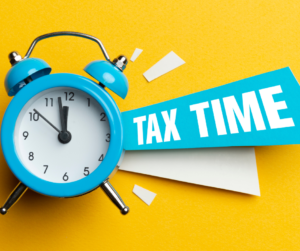Sales tax compliance can be overwhelming, and it’s even more complicated if you, as the seller, have an economic presence in multiple states because of the number of things to keep track of. This step-by-step sales tax guide is a useful place to start to ensure you stay ahead of your filing requirements. We always try to remind clients that sales tax is a pass-thru fiduciary tax. If you collect it and remit it correctly, there should be no liability to the seller. Where it gets dicey is when the seller doesn’t correctly collect, remit and report in jurisdictions in which it is required to do so.
1.) Discover Which States You Meet The Physical Or Economic Nexus Threshold In
The first step is to determine where your business may be liable to collect sales tax. Before 2018, this was more straightforward. If you had a physical presence in a state, you were responsible to collect and remit sales tax. The 2018 U.S. Supreme Court ruling in South Dakota v. Wayfair, Inc changed the sales tax landscape by allowing South Dakota to enact economic nexus legislation, meaning that sellers who had a certain amount of economic presence in the state (either by reaching a certain number of sales or amount of money from sales) were also liable to become compliant in that state, even without a physical presence. Other states quickly jumped on the bandwagon, and today every state has some level of economic nexus legislation. Economic nexus threshold requirements vary by state, so check out yours here. It’s important to note that the enactment dates for economic nexus measurement also differ from state to state, so there are several moving parts in correctly determining the nexus start date. Sellers now need to consider BOTH their physical presence and economic nexus in a state to determine the correct reporting date.
2.) Determine If Your Products And Services Are Subject To Sales Tax
Now that you know which states you have reached nexus in, it is time to figure out which products and services are subject to sales tax and the state sales tax rates. Heads up – this varies greatly by state, and in some states it can even vary by city or county. In general, the sale of Tangible Personal Property (TPP) is subject to sales tax collection in the United States, but there are plenty of exemptions. And it’s not always clear what TPP is. What about software? Software as a service (SaaS)? Other digital products?
On the other hand, traditionally services are generally not subject to sales tax unless specifically delineated. However states are becoming more aggressive and also expanding definitions of services that might fall under their taxable enumerated services. (An example includes data processing services – taxable in many states.) Make sure you are up to date here as well. Other things that can create nexus and state tax reporting issues include:
- Hiring a new employee
- Contracting with an independent contractor
- Maintaining inventory in third-party warehouses
- Owning property or renting office space
- Being a lessor of items of property (such as sensors, widgets, etc.) that your customer may use in a state, but where you retain title and charge a lease or rental charge
- Using fulfillment services like Fulfillment By Amazon (FBA) or similar services which place inventory in third-party warehouses in different states
3.) Register, Report And File To Meet Sales Tax Due Dates
Once nexus and taxability have been addressed, it’s generally time to register for a sales tax permit in each of the states in which you are subject to sales tax collection. This process also varies by state, so check out this helpful guide from TaxJar to learn how to register. Important planning note: Depending upon the nexus start dates determined, a seller may find that they have retroactive exposure because they should have been collecting and remitting tax in a state for several years prior. Remember earlier, when we said there should be no liability for the seller, since sales tax is a pass through? Well, if sales tax hasn’t been correctly collected in prior periods, then the liability may shift to the seller. This is where we assist clients regularly. We will often work with them to become compliant for prior periods (either through the voluntary disclosure process or via registration and back filings). Only once the retroactive remediation is done can a company properly file correctly going forward.
Once a sales tax due date comes around, you will need to prepare for filing by determining the amount of sales tax you collected in the state and in each county, city and/or other special taxing district. Then it is time to file.
4.) Filing – Consider Automation
We’ve been doing state tax consulting for long enough to remember paper filings … but we certainly don’t recommend going that route anymore! There are a lot of software options out there for companies when it comes to sales tax compliance. We work with our clients and recommend many of the popular software vendors out there, depending on each client’s unique situation. We always recommend a balance of consulting (generally to properly determine nexus, taxability and any retroactive remediation, as discussed above), combined with an automated solution for filing going forward. And in that process, communication is key. That’s one of our strengths! Along with those many years of experience!
5.) Still Have Sales Tax Compliance Questions?
As shown above, it is usually not as easy as 1,2,3 or “plug and play” of a software product – especially if you weren’t sales tax compliant in the past. Luckily, our team of multistate sales tax experts can help support you and move forward with tax compliance. Please contact us today. We’re happy to clarify any multistate sales tax issues you’re trying to navigate.





















